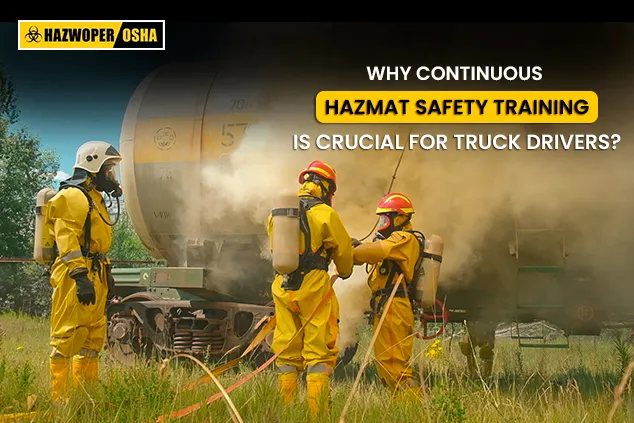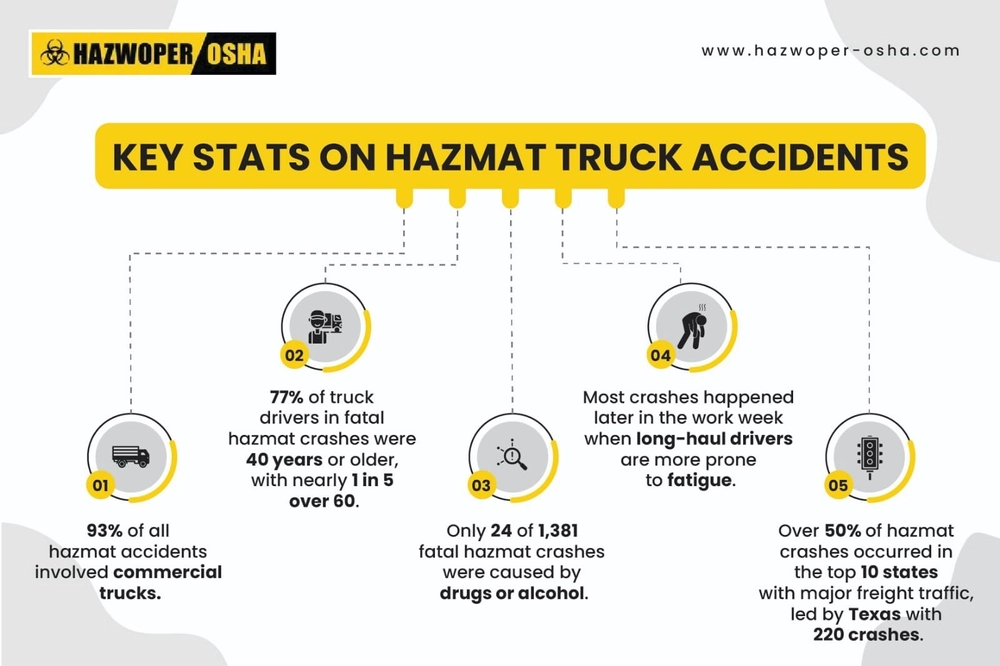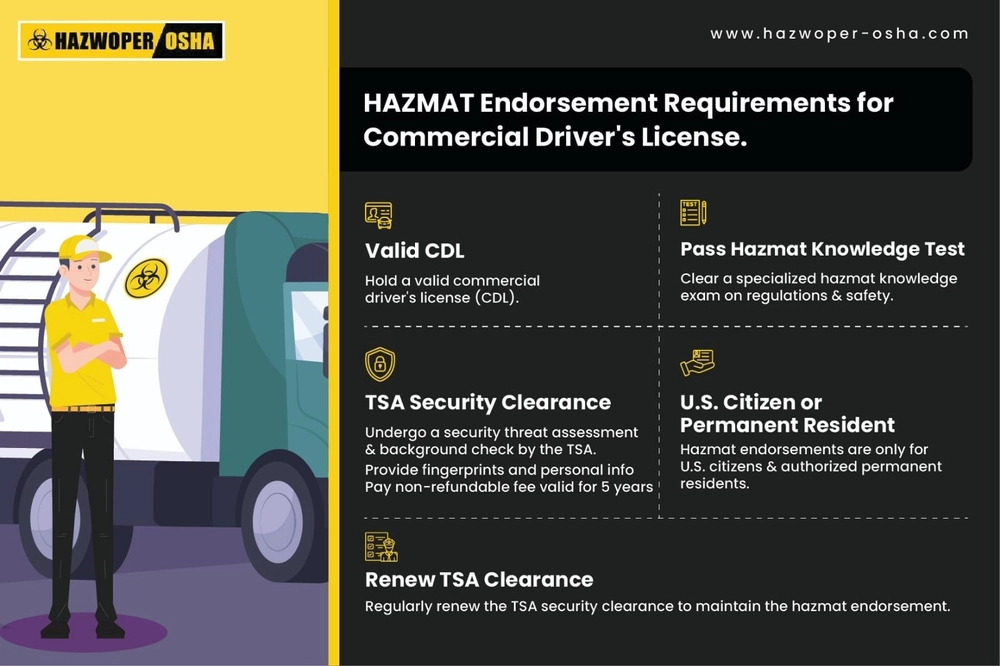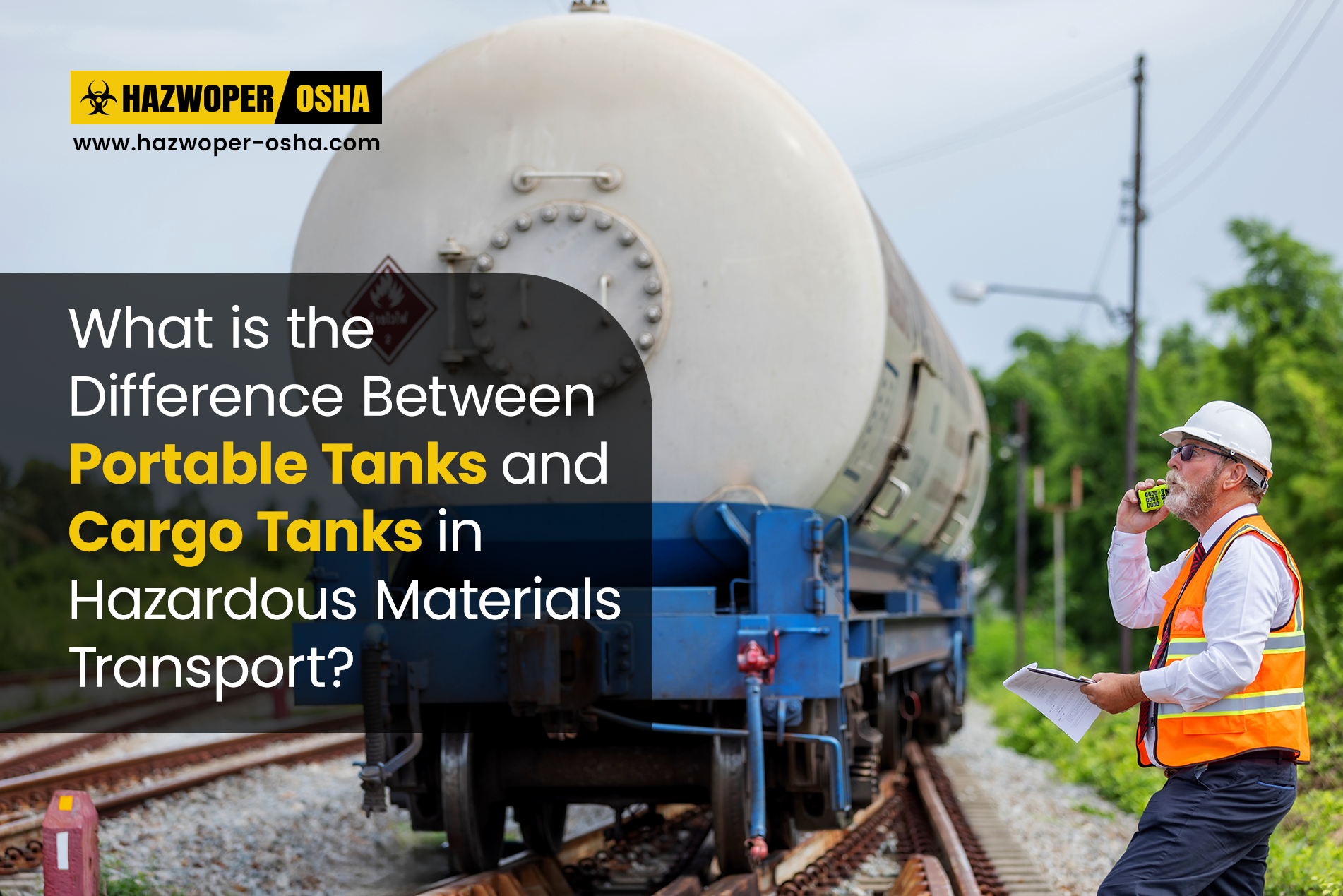Why Continuous Hazmat Safety Training is Crucial for Truck Drivers?

Introduction:
Hazmat transportation is the process of moving hazardous materials that pose a risk to human health, safety, and the environment. Hazmat truck drivers are at significant risk in case of hazmat spills, accidental exposure, or accidents. To keep the driver, people, and environment safe, hazmat safety training is a must for truck drivers. This article will dig deeper into the need for hazmat training for truck drivers and how it helps to align with safety and compliance in the transportation industry.
Hazmat Accidents: Statistics & Causes
These are some of the key stats about hazmat truck accidents and the factors that contribute to these incidents. Through these stats, one can understand the gravity of hazmat accidents and the need for proper and Up-to-date training.

Statistics showing the causes and other factors associated with HAZMAT Truck Accidents in the USA.
Causes of Hazmat Truck Accidents
Hazmat truck incidents are perilous and life-threatening for not only the truck drivers, but also for the environment and other people close by. These accidents are particularly concerning due to the potential risk of the release and spillage of hazardous substances, explosions, fires, and other catastrophic events. That ultimately results in severe health hazards, environmental contamination, and significant property damage. Therefore, understanding the primary causes of hazmat truck accidents is essential for implementing preventive measures to reduce their occurrence.
Liquid cargo sloshing:
Sloshing is the phenomenon when a truck accelerates, turns, and brakes, the liquid inside the truck shifts altering the center of gravity of the vehicle and un-stabling it. Liquid cargo sloshing in partially filled tanks makes the truck unstable, and it rolls over. Using baffled tank trailers can help, as they have internal compartments that minimize liquid movement, thereby stabilizing the vehicle and reducing the risk of rollover. Additionally, training drivers on safe driving techniques, such as gradual acceleration and braking, can further mitigate the effects of sloshing.
Ruptures of Wet Lines:
Wet lines are the exterior hoses and pipes that connect the engine to the truck's fuel tank. Rupture of the wet lines on the truck's exterior due to a collision causes spillage of gasoline and other flammable liquids on the road. By reinforcing or shielding wet lines with protective coverings, we can reduce the risk of rupture during collisions. Additionally, implementing regular inspections and maintenance checks to ensure the integrity of these lines can help prevent spillage of flammable liquids.
Incorrectly Secured Cargo:
While transporting hazardous materials, they must be loaded securely and braced. Incorrectly secured or placed cargo that shifts the truck's center of gravity can cause rollover. Regular training for loading personnel on proper techniques and safety standards can enhance cargo security, thereby reducing the risk of accidents.
Slippery Roads:
Rain, ice, snow and snow-like weather conditions make the roads slippery and reduce the traction of the trucks. Due to this, the vehicle loses control, particularly while turning and braking. The risks of collisions and rollovers significantly increase due to slippery roads. Equipping trucks with high-quality tires designed for enhanced traction in wet and icy conditions can help maintain control. Additionally, implementing rigorous driver training programs focused on safe driving practices in adverse weather can further mitigate the risks of collisions and rollovers.
Human Factors:
Hazmat truck incidents significantly happen due to human factors such as distractions, and the fatigued state of drivers. Fatigued and impaired drivers can have reduced reaction times, poor control of the vehicle, and poor judgment. Distracted drivers fail to recognize the hazards and react appropriately to the road conditions. Driver working hours and mandatory rest periods can help reduce fatigue. Additionally, employing technologies such as fatigue detection systems and in-cab cameras can monitor driver alertness and provide real-time feedback to prevent accidents.
Lack of Training:
An improperly trained hazmat truck driver poses a constant danger to their own life and others'. Comprehensive training programs ensure drivers are equipped to handle hazardous materials safely, minimizing risks to themselves and the public.
What are the Hazards for transporting Hazardous materials through trucks?
Several risks and hazards are associated with hazmat transport through trucks, including:
Explosions and Fire Hazards
The transportation of flammable gases, liquids, and explosives can cause fires and explosions due to mishandling.
Spills
Hazmat incidents result in accidental spillage and the release of hazardous materials while loading, handling, unloading, and transiting.
Lithium-Ion Battery Explosions and Fires
Improperly packed, damaged, and overheated li-ion batteries can catch fire. Due to their nature, their fire is difficult to extinguish, making them a serious hazard for transportation.
Corrosives
Strong corrosives, including acids and bases, can damage the vehicle body, fail its parts, and cause an accident.
Radioactive Release
Radioactive releases cause a major incident as they emit ionizing radiation and cause cancer and other serious health problems.
Feel free to check out our in-depth blog on the best practice for shipping hazardous materials.
Hazmat Endorsement
Hazmat Endorsement is a certification added to truck drivers' CDLs that allows them to drive vehicles while carrying hazardous materials such as fuels, chemicals, nuclear waste products, and flammable gases. Below is an infographic that outlines all the requirements to acquire the hazmat endorsement:

Hazmat Endorsement Requirements to Acquire Commercial Driver's License.
Why is HAZMAT Safety Training a must for truck drivers?
The federal law makes it mandatory for drivers to be aware of safety measures while shipping hazardous materials to minimize HAZMAT incidents. The drivers of HAZMAT trucks should be trained regarding security and general awareness.
The following are the reasons why hazmat truck drivers must undergo DOT HAZMAT Training Blog regularly:
Safety First!
The driver and the crew members are at major risk while transporting hazardous materials. With proper and relevant hazmat training and skills, the driver and his crew can safely handle, load, unload, and transport the hazardous materials, lowering the risks of spills, accidents, and exposure that will lead to injuries and fatalities.
Handling Hazmat Accidents Properly
When an accident occurs resulting in the spillage of hazardous materials, certified and trained divers know how to respond appropriately, take control of the situation, and alert the relevant authorities. Proper hazmat training for truck drivers minimizes the impact and danger of a hazmat incident.
Environmental Protection
Due to their nature, hazardous materials are a major threat to the environment. One hazardous material spill can make the area inhabitable for human and animal population and destroy the ecosystem. That is why a trained driver will understand the regulations and protocols to prevent spills, leaks, or releases that can pollute the water, air, and soil.
Job Security
The trucking industry has a small number of truck drivers. That is why every company is always searching for trained and certified drivers. A truck driver with Hazmat safety training will be more valuable and have a secure future.
Better Salary and Benefits
Despite decent salaries being paid to truck drivers, those with HAZMAT training are among the highest-paid drivers in the trucking industry.
For example, a HAZMAT truck driver in Toronto can earn as much as $30/hour.
Competitive Edge
Having fresh HAZMAT safety training is a major competitive edge over other drivers as it shows the driver's competency. Even if the driver rarely must transport hazardous materials, this training will make him/her distinct from his/her peers.
Ultimately, hazmat training requirements for commercial drivers helps to save precious lives, protect the ecosystem, and keep the supply chain of hazardous materials intact and working.
We are Helping Through Our Course
A driver with the right safety training could make it safely from point A to B instead of a crash. That is why we, as leading safety training providers, have designed 'DOT Hazmat Transportation - Advanced General Awareness Training, to provide general and function-specific training for new drivers. As a refresher training, we are providing the CDL Entry Level Driver Training (ELDT) - HAZMAT (H) Endorsement Training in accordance with Federal Motor Carrier Safety Administration (FMCSA) and the DOT's Hazardous Materials Regulations (HMR, CFR Title 49 Parts 171-180). Thousands of workers and employees have taken our in-depth, up-to-date courses, making us the most trusted safety training provider in the USA.
Conclusion
Shipping hazardous materials is a very important duty that should be performed with full commitment by both the trucking companies and drivers. Continuous evolution in the industry makes it a necessity for the truck drivers to get detailed HAZMAT safety training. These training courses are a major investment for the reduction of accidents, hazardous materials spill and leakage, life and property damage. Not only this but these training courses ensure a safer ecosystem and keep the business operating successfully.
References:
Intellishift, What Is DOT Compliance? Rules and Regulations You Need to Know, https://intellishift.com/resources/blog/what-is-dot-compliance/
Moris Brat, 31st Oct 2023, [ANALYSIS] HAZARDOUS MATERIAL CRASH STATISTICS, https://www.morrisbart.com/analysis-hazardous-material-crash-statistics/
CRROSEN LAW FIRM, 4th April 2024, ACCIDENTS INVOLVING HAZMAT TRUCKS, https://www.crossenlawfirm.com/blog/accidents-involving-hazmat-trucks/

 EN |
EN |  ES
ES
































































































































